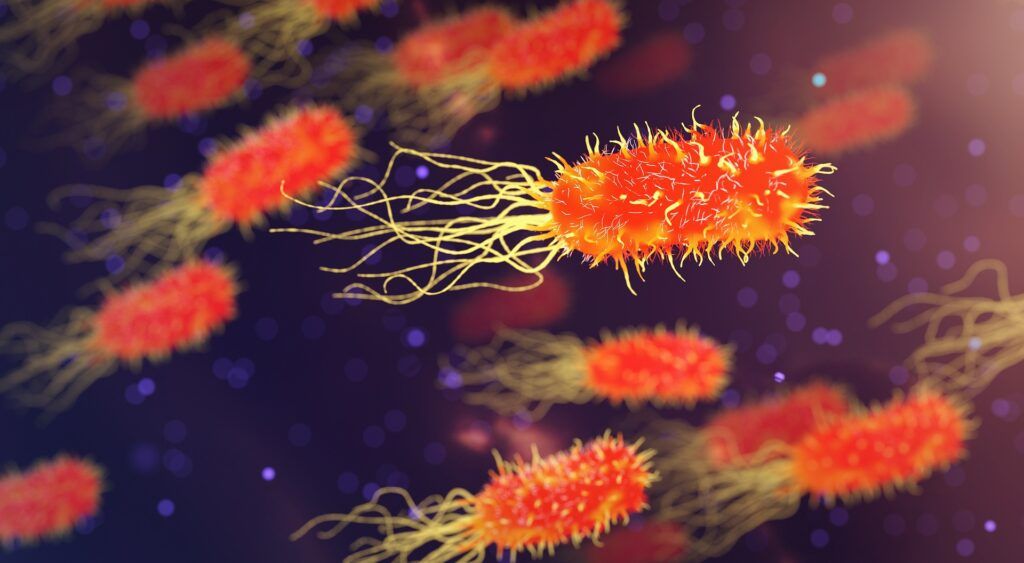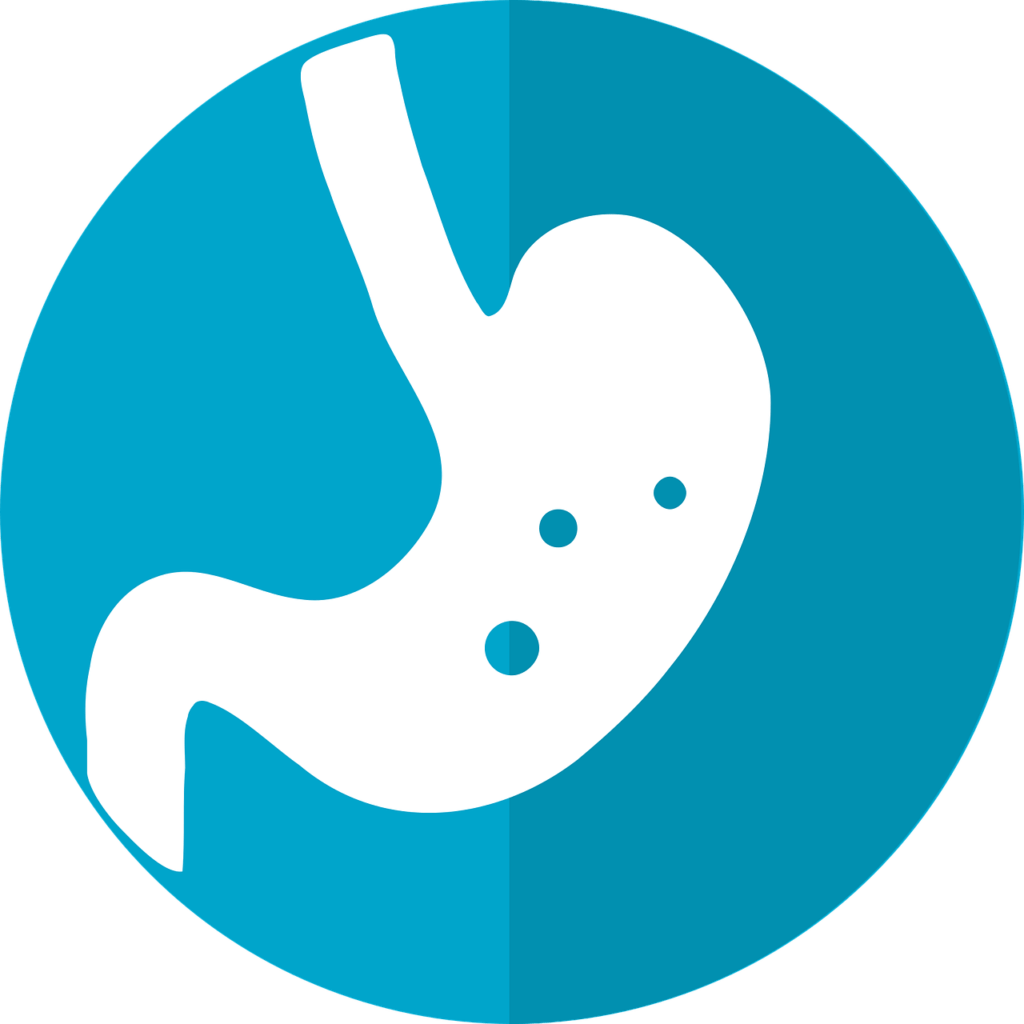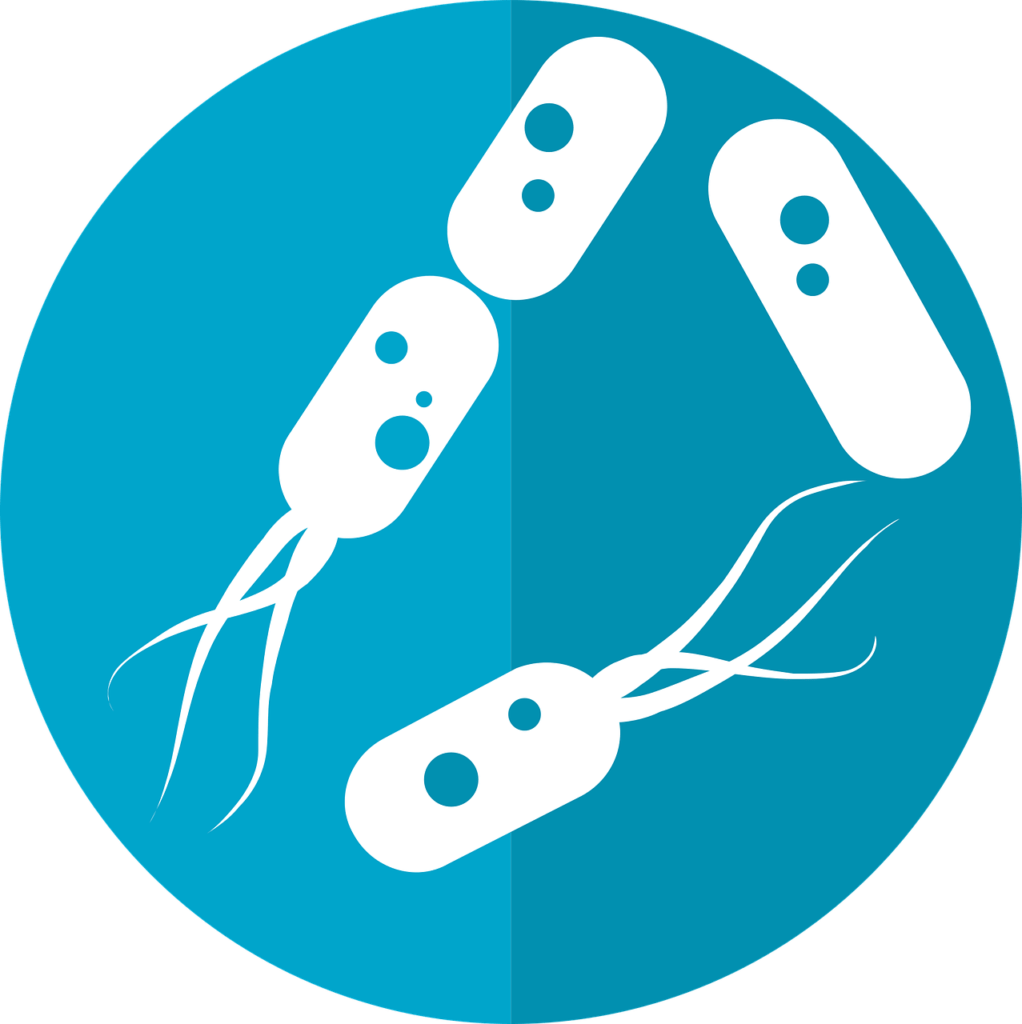Bacteria are the oldest and most abundant organisms on Earth. They are also the ones that most easily adapt to environmental conditions and have an unsurpassed ability to coexist with other living beings, including us.
More than 1000 species of microorganisms (mostly bacteria, but also viruses, protozoa, archaea and fungi), exceeding by ~10 times the number of cells in the adult body, live within our gastrointestinal (GI) tract. This microbial collection, known as the gut microbiome, co-evolved with humans -and all animals- over thousands of years resulting in a mutually beneficial relationship.

Bacterial colonization of the gut happens at birth, and is shaped in the first few years of life under the influence of several factors including delivery (vaginal or Caesarean section), whether breastfed or formula fed, weaning, diet, antibiotic use, infections, and stress (1). The composition of gut bacteria remains quite constant in each of us, and tends to be similar within families, among close friends, and in people that live together (2). However, diet, exercise, stress, mood changes, disease, and environmental exposure to pathogens and contaminants can all modulate the balance of gut microbes and tilt the scale between disease and health (3).
Gut Bacteria: New Best Friends Against Pain?
It has long been known that specific groups of intestinal bacteria are over- or under-represented in people with painful GI conditions such as irritable bowel syndrome (IBS) and inflammatory bowel disease (IBD). However, only in the last few years the role of gut bacteria in pain regulation did become a hot topic of research. For instance, early this year, two separate studies (reviewed here and here) revealed that the gut microbiome profiles from people with widespread chronic pain (fibromyalgia) differed from those of healthy controls (including siblings and close relatives) (4, 5), prompting speculation about whether specific gut bacteria can ‘remotely’ trigger pain.
This 2-part blog series will explore what is known so far about the mechanisms by which gut microbiota alterations may trigger pain in the GI tract and elsewhere, and influence pain processing by the brain.

Gut Microbiota and Visceral Pain
It is now well established that alterations in the gut microbiota – gut dysbiosis- contribute critically to the development of GI disorders such as IBS, IBD, celiac disease, and food allergies (6, 7). Interestingly, a 2017 study in mice suggests that these conditions do not emerge suddenly, but result from modest, repeated insults that end up disabling the host’s defenses against inflammation. Their research showed that minor, recurrent infections caused by food poisoning reduce the levels of intestinal alkaline phosphatase – the enzyme that detoxifies LPS (endotoxin) the most abundant pro-inflammatory bacterial toxin. This effectively unmasks the pathogenic potential of commensal Gram negative bacteria and promotes chronic inflammation, colitis, and eventually IBD. Notably, the study showed that the heightened pro-inflammatory state of intestinal tissue persisted long after the initial infection was resolved by the host’s immune response (8).

In turn, animal studies and clinical trials in humans confirmed that gut microbes are important modulators of visceral pain that results from the above conditions (9). Many insights into gut microbiota properties and functions come from research on mice born and bred under strict sterile conditions that prevent bacterial growth in any part of the body. A study showed that these “germ-free” mice develop visceral hypersensitivity (hyperalgesia), and this can be reversed by colonization with normal microbiota from control mice. Moreover, germ-free mice showed volumetric changes in brain areas related to pain processing (e.g. anterior cingulate cortex and periaqueductal grey) that were also reversed by replenishment of gut bacteria from conventionally-bred mice (10). It is becoming clear, however, that the nature of pain also determines the influence that gut bacteria have on pain perception; illustrating this point, studies showed that germ-free mice experienced less pain, compared to normal mice, when exposed to LPS, carrageenan (a red seaweed extract), or pro-inflammatory cytokines (11).
Other studies, both in mice and humans, suggested that depletion of gut bacteria by antibiotics early in life may predispose to more intense and long-lasting visceral pain and disorders like IBD later in life, and stressed the benefits of probiotics and prebiotics for symptom reduction (9, 12, 13). Conversely, research showed that transplantation of fecal microbiota from IBS patients reproduced disease symptoms in rats (14).
Dr. Tatta’s simple and effective pain assessment tools. Quickly and easily assess pain so you can develop actionable solutions in less time.
Antibiotics, a Double-Edge Sword
Broad-spectrum antibiotics eliminate not only pathogenic bacteria, but deplete also microbes that ferment butyrate and other essential, fiber-derived small-chain fatty acids (SCFAs) needed to maintain microbial homeostasis. In the absence of butyrate, gut metabolism is halted, mitochondrial beta-oxidation in colonocytes becomes disabled, and increased oxygen levels reach the GI lumen. The colon is essentially an oxygen-free (anaerobic) environment, populated by benign obligate anaerobes (mainly Firmicutes and Bacteroidetes). In the presence of oxygen, pathogenic facultative anaerobes such as E. coli outcompete the colon’s normal bacteria, leading to immune activation, inflammation, and manifestations of GI disease (3).
Stay Tuned… In the second part of this blog series we will talk about the gut microbiota-brain-axis, and how signals released by gut microbes affect pain processing in the brain.
Are you a practitioner Interested in learning more about functional nutrition can shift the microbiome and alleviate chronic pain?
Join the wait list for the Functional Nutrition for Chronic Pain Practitioner Certification program here!
REFERENCES:
1- Thursby, E., & Juge, N. (2017). Introduction to the human gut microbiota. The Biochemical journal, 474(11), 1823–1836. doi:10.1042/BCJ20160510
2- Brito, I.L., Gurry, T., Zhao, S. et al. Transmission of human-associated microbiota along family and social networks. Nat Microbiol 4, 964–971 (2019) doi:10.1038/s41564-019-0409-6
3- Hills, R. D., Pontefract, B. A., Mishcon, H. R., Black, C. A., Sutton, S. C., & Theberge, C. R. (2019). Gut microbiome: profound implications for diet and disease. Nutrients, 11(7), 1613.
4- Minerbi, A., Gonzalez, E., Brereton, N.J.B., Anjarkouchian, A., Dewar, K., Fitzcharles, M-A., Chevalier, S., Shir, Y. (2019) Altered microbiome composition in individuals with fibromyalgia. Pain, Jun 18.doi: 10.1097/j.pain.0000000000001640 / PMID: 31219947
5- Clos-Garcia, M., Andrés-Marin, N., Fernández-Eulate, G., Abecia, L., Lavín, J. L., van Liempd, S., … Falcón-Pérez, J. M. (2019). Gut microbiome and serum metabolome analyses identify molecular biomarkers and altered glutamate metabolism in fibromyalgia. EBioMedicine, 46, 499–511. doi:10.1016/j.ebiom.2019.07.031
6- Zuo, T., & Ng, S. C. (2018). The Gut Microbiota in the Pathogenesis and Therapeutics of Inflammatory Bowel Disease. Frontiers in microbiology, 9, 2247. doi:10.3389/fmicb.2018.02247
7- Iacob, S., & Iacob, D. G. (2019). Infectious Threats, the Intestinal Barrier, and Its Trojan Horse: Dysbiosis. Frontiers in microbiology, 10, 1676. doi:10.3389/fmicb.2019.01676
8- Yang, W. H., Heithoff, D. M., Aziz, P. V., Sperandio, M., Nizet, V., Mahan, M. J., & Marth, J. D. (2017). Recurrent infection progressively disables host protection against intestinal inflammation. Science, 358(6370), eaao5610.
9- Pusceddu, M. M., Murray, K., & Gareau, M. G. (2018). Targeting the microbiota, from irritable bowel syndrome to mood disorders: focus on probiotics and prebiotics. Current pathobiology reports, 6(1), 1-13.
10- Luczynski, P., Tramullas, M., Viola, M., Shanahan, F., Clarke, G., O’Mahony, S., … & Cryan, J. F. (2017). Microbiota regulates visceral pain in the mouse. Elife, 6, e25887.
11- Amaral, F. A., Sachs, D., Costa, V. V., Fagundes, C. T., Cisalpino, D., Cunha, T. M., … & Vieira, L. Q. (2008). Commensal microbiota is fundamental for the development of inflammatory pain. Proceedings of the National Academy of Sciences, 105(6), 2193-2197.
12- Verdú, E. F., Bercik, P., Verma-Gandhu, M., Huang, X. X., Blennerhassett, P., Jackson, W., … Collins, S. M. (2006). Specific probiotic therapy attenuates antibiotic induced visceral hypersensitivity in mice. Gut, 55(2), 182–190. doi:10.1136/gut.2005.066100
13- Kronman, M. P., Zaoutis, T. E., Haynes, K., Feng, R., & Coffin, S. E. (2012). Antibiotic exposure and IBD development among children: a population-based cohort study. Pediatrics, 130(4), e794–e803. doi:10.1542/peds.2011-3886
14- Crouzet, L., Gaultier, E., Del’Homme, C., Cartier, C., Delmas, E., Dapoigny, M., … & Bernalier‐Donadille, A. (2013). The hypersensitivity to colonic distension of IBS patients can be transferred to rats through their fecal microbiota. Neurogastroenterology & Motility, 25(4), e272-e282.



